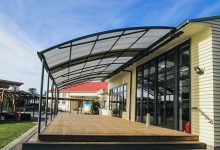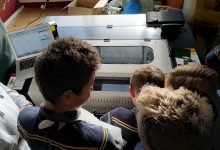
Multiple studies have shown that rates of anxiety and depression among the general population have skyrocketed since the pandemic began.
This is a feature article from our Term 3 issue of School News. Check out the full edition online now (or pick up your staffroom copy!).
These intense anxieties we feel in the middle of all this disruption might enable us to better empathise with some of the feelings children and adults with Autism Spectrum Disorder (ASD) manage as part of their day-to-day. Recently, I complained to a friend who has ASD about the stress of lockdown and my frustration at having to continually shift my work schedule to meet COVID-19 restrictions. She shot back: “Welcome to my world!”
This got me thinking about how different the experience of remote or online learning during lockdown must have been for students with ASD and other learning needs.
For context: I originally trained as a registered nurse, specialising in sensory processing disorders and learning disabilities. For almost two decades I worked in education, community health, and hospitals around the UK, spending time with children and adults who had many different needs. I worked very closely with children who had dyslexia, dyspraxia, and sensory processing disorders. For several years, I specialised in ASD and behaviour management and remember how a sudden change in routine would dramatically escalate anxiety and behaviour. The build up to birthdays, Christmases, and school holidays were particularly tricky periods of time that had to be pre-planned in detail; if we had experienced a sudden pandemic lockdown then, a smooth transition from carer to teacher would have been virtually impossible.
In those pre-tech years, ‘best practice’ for educational consistency and communication was limited to an entry in a home/school message book, the odd emergency phone call, and a yearly multi-disciplinary meeting. Technology has vastly improved communication between teachers and parents today! With this professional background in mind, I wondered how the COVID-enforced routine disruption would challenge students with disabilities and prove stressful for parents and carers.
Dr Stephen Shore, professor and author of The Astonishing Spectrum wrote in a recent piece for Psychology Today NZ: “No one is immune to the disruptions that the coronavirus pandemic is forcing upon daily life. But for people on the autism spectrum, the loss of familiar routines is especially damaging, often leading to deep anxiety that can be difficult to surmount.”
However, upon further research, I learned that some students with special needs were thriving in lockdown. After the initial change in routine, some parents reported seeing their child blossom in the new home-school environment, no longer having to deal with the challenges of social interaction and assisted by a variety of digital teaching aids. In fact, for many students, it has been the return to school post-lockdown restrictions that has caused more problems.
On one ASD Facebook forum, a mother explained that remote learning had suited her Year 12 daughter ideally and she had since noticed a significant drop in engagement now that regular attendance has resumed. I heard from three parents who likewise expressed concern about their child returning to school because they had found lockdown so beneficial. One parent described the return to school “very stressful” and another mother of a Year 8 boy with ADHD told me she was now considering making the permanent transition to remote learning based on her son’s improvement over lockdown.
Anecdotally, at least, it seems that some children have found their learning style suits isolation and the return to ‘normality’ might now be their biggest source of anxiety. For schools, remote learning has been a challenge and an experiment, and teachers should consult with their students who have ASD and other learning differences, along with their parents, to find out what they have found works (or not) for them. Perhaps bringing elements of their remote learning routine into the classroom can help with the transition.
Technology has transformed special needs education and enhanced communication tools to boost student engagement in classroom settings. The use of computers, tablets, an array of software, teaching and communication aids, games, live content, and channels like YouTube have changed the experience for many learners, and evidence tells us that most children with different learning needs, especially those with ASD, dyslexia and communication differences benefit greatly from the level of agency they can achieve with these tools.
I recently read a paper published in 2019, called ‘The Impact of Technology on People with Autism Spectrum Disorder: A Systematic Literature Review’, which found: “People with autism spectrum disorder (ASD) tend to enjoy themselves and be engaged when interacting with computers, as these interactions occur in a safe and trustworthy environment.”
The paper reviewed 94 studies that show how technology used in education helps people with ASD to develop a variety of skills.
“Several studies showed that most people with autism show a natural affinity for technology and a good disposition for using technology and learning through the use of computers. This is because the environment and context that these experiences provide are predictable and structured, which helps people with ASD to maintain their routines and repetitive behaviours without affecting their comfort.”
As technology continues to advance, there are an increasing number of tools at our educational disposal, including from sensors and augmented reality, to geolocation, video games and Kinect.
As we take stock and try to learn from our national remote learning experiment, it’s a valuable time to consider how we might rethink our teaching strategies to cater more explicitly to students with different learning needs by exploring the wide range of teaching tools and aids now available.
I spoke with a specialist in speech recognition software from school supplier Nuance Communications, to find out how this particular technology works for students with dyslexia and other learning needs. He said: “Technology is getting more accurate at ‘speaker independent’ recognition so that anyone who talks can have their speech converted to text. However, the accuracy rates are limited to around 90 percent, meaning that accuracy is not high enough for classroom interactions.”
However: “Speech recognition can be used to assist students with dyslexia or dyspraxic symptoms, and more generally. Students can talk, instead of write or type, and this can improve the quality and length of responses by an order of magnitude. There’s a video on YouTube with two Brisbane speech therapists, called ‘Dare to Speak’, which provides a background on how to use this type of technology. Students with dyslexia and related challenges can benefit from speech recognition software. While younger students may have difficulty using software, introducing speech recognition as a general skill has benefits as students get older and the writing required increases.”
Industry viewpoint: speech recognition specialist Derek Austin on accessibility
For schools looking to upgrade assistive technology in classrooms, staff should consider expanding accessibility resources to all students. Accessibility options may benefit a wider group than the initial target group. For example, speech recognition is a general facility that can improve productivity for the whole student body, as well as those with expressive or physical challenges. All students should learn to use modern technology like speech recognition across the curriculum, to streamline their effectiveness and time management, especially in the lead up to examinations.









